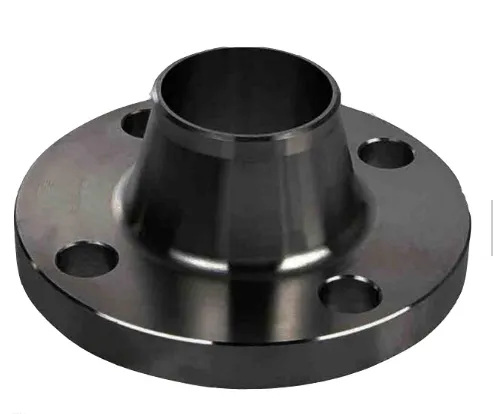-
Cangzhou Yulong Steel Co., Ltd.
-
Phone:
+86 13303177267 -
Email:
admin@ylsteelfittings.com
- English
- Arabic
- Italian
- Spanish
- Portuguese
- German
- kazakh
- Persian
- Greek
- French
- Russian
- Polish
- Thai
- Indonesian
- Vietnamese
- Zulu
- Korean
- Uzbek
- Hindi
- Serbian
- Malay
- Ukrainian
- Gujarati
- Haitian Creole
- hausa
- hawaiian
- Hebrew
- Miao
- Hungarian
- Icelandic
- igbo
- irish
- Japanese
- Javanese
- Kannada
- Khmer
- Rwandese
- Afrikaans
- Albanian
- Amharic
- Armenian
- Azerbaijani
- Basque
- Belarusian
- Bengali
- Bosnian
- Bulgarian
- Catalan
- Cebuano
- China
- China (Taiwan)
- Corsican
- Croatian
- Czech
- Danish
- Esperanto
- Estonian
- Finnish
- Frisian
- Galician
- Georgian
- Kurdish
- Kyrgyz
- Lao
- Latin
- Latvian
- Lithuanian
- Luxembourgish
- Macedonian
- Malgashi
- Malayalam
- Maltese
- Maori
- Marathi
- Mongolian
- Myanmar
- Nepali
- Norwegian
- Norwegian
- Occitan
- Pashto
- Dutch
- Punjabi
- Romanian
- Samoan
- Scottish Gaelic
- Sesotho
- Shona
- Sindhi
- Sinhala
- Slovak
- Slovenian
- Somali
- Sundanese
- Swahili
- Swedish
- Tagalog
- Tajik
- Tamil
- Tatar
- Telugu
- Turkish
- Turkmen
- Urdu
- Uighur
- Welsh
- Bantu
- Yiddish
- Yoruba

Nov . 01, 2024 13:21 Back to list
Welded 90 Degree Elbow for Efficient Pipe Connections in Various Applications
Understanding the Weld 90 Degree Elbow Applications and Benefits
In the realm of piping and plumbing, the weld 90 degree elbow is an essential component that plays a crucial role in guiding the flow of liquids and gases. This fitting allows for a change in the direction of piping systems, typically turning the flow direction by 90 degrees either to the left or right. Understanding the applications and benefits of a weld 90 degree elbow can help engineers and plumbers make informed decisions when designing or modifying piping systems.
Construction and Material
Weld 90 degree elbows are constructed from a range of materials, including steel, stainless steel, and plastic, depending on the application’s requirements. In industrial settings, carbon steel and stainless steel are favored due to their strength and resistance to high temperatures and pressures. The welding process used to connect these elbows ensures a strong, leak-free joint that can withstand the demanding conditions of various environments.
Applications
The versatility of weld 90 degree elbows allows them to be utilized in numerous applications across different industries. In the oil and gas sector, these fittings are crucial in pipelines that transport crude oil, natural gas, or refined products. In water distribution systems, they help redirect flow in treatment plants or municipal water supply networks. Additionally, they are commonly found in HVAC systems where efficiency and space utilization are critical.
Benefits of Using Weld 90 Degree Elbows
weld 90 degree elbow

1. Durability Welded joints provide exceptional strength and stability, reducing the risk of leaks and failures over time. This durability is especially important in high-pressure systems where safety is a top priority.
2. Flow Efficiency The design of the weld 90 degree elbow allows for smooth transitions in piping systems, promoting efficient flow and minimizing turbulence. This efficiency can lead to reduced energy costs and optimized performance of pumping systems.
3. Versatility Available in various sizes and materials, these elbows can be tailored to suit specific needs, making them adaptable to different engineering projects regardless of complexity.
4. Reduced Maintenance The robust nature of welded connections means less frequent repairs and maintenance are required. This longevity is particularly advantageous in remote or hard-to-access installations where maintenance can be costly and time-consuming.
5. Cost-Effectiveness While the initial investment may be higher compared to other piping components, the long-term savings achieved through reduced maintenance, fewer failures, and enhanced efficiency lead to a more cost-effective solution over time.
Conclusion
In summary, the weld 90 degree elbow is a vital element in many piping systems, offering strength, durability, and versatility. Its ability to efficiently redirect flow not only contributes to the reliability of various industrial processes but also enhances overall system performance. As industries continue to evolve, the role of such fittings remains indispensable, underscoring the importance of understanding their applications and benefits in modern piping and plumbing practices.
Latest news
-
ANSI 150P SS304 SO FLANGE
NewsFeb.14,2025
-
ASTM A333GR6 STEEL PIPE
NewsJan.20,2025
-
ANSI B16.5 WELDING NECK FLANGE
NewsJan.15,2026
-
ANSI B16.5 SLIP-ON FLANGE
NewsApr.19,2024
-
SABS 1123 FLANGE
NewsJan.15,2025
-
DIN86044 PLATE FLANGE
NewsApr.19,2024
-
DIN2527 BLIND FLANGE
NewsApr.12,2024
-
JIS B2311 Butt-Welding Fittings LR/SR 45°/90° /180°Seamless/Weld
NewsApr.23,2024











